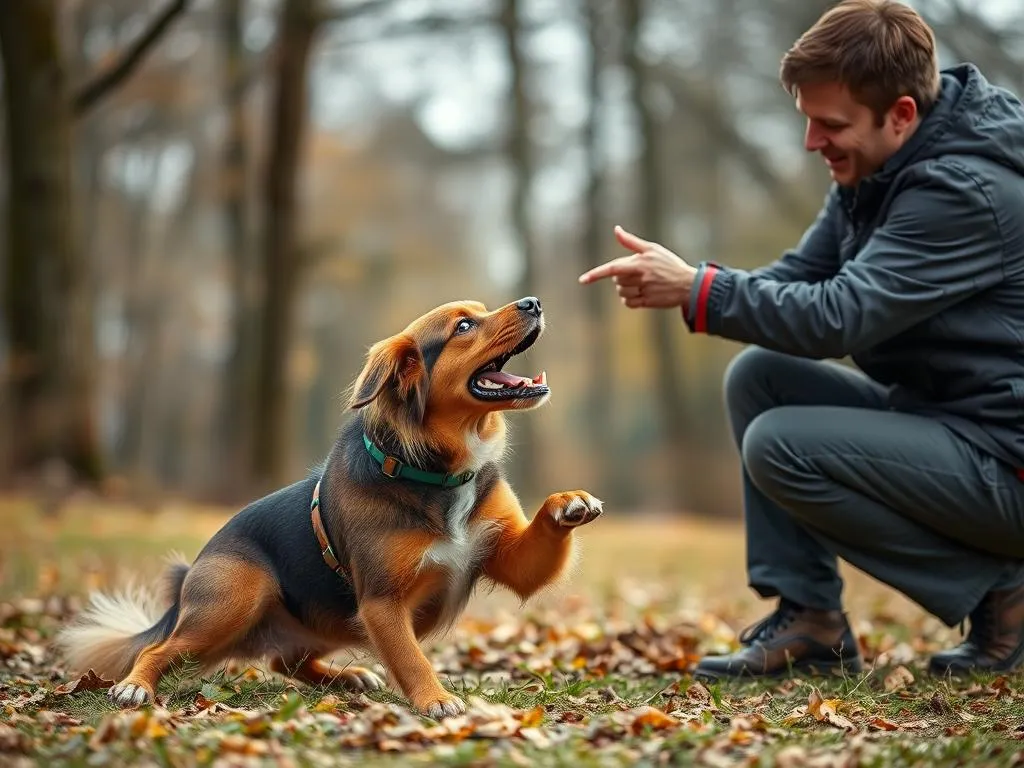
Introduction
Dog training is not just a necessity; it’s an enriching experience that strengthens the bond between you and your furry friend. Dog trick training is a specialized area within this field, focusing on teaching your canine companion fun and engaging tricks. This type of training isn’t merely for entertainment; it serves multiple important purposes. From providing mental stimulation and enhancing communication to fostering a deeper connection, the benefits of teaching your dog tricks are abundant. Whether you’re a new dog owner eager to explore the world of training or a seasoned trainer looking to expand your repertoire, this guide will provide valuable insights and practical tips on dog trick training.
Understanding Dog Behavior
Canine Learning Principles
To embark on your journey of dog trick training, it’s essential to understand how dogs learn. The foundation of dog training lies in two primary learning principles: classical conditioning and operant conditioning.
- Classical Conditioning involves associating a neutral stimulus with a significant one. For example, the sound of a clicker can become associated with a treat.
- Operant Conditioning focuses on reinforcing behaviors through rewards or consequences. This principle is crucial in dog trick training, where positive reinforcement plays a vital role.
Positive reinforcement, which includes treats, praise, and playtime, encourages dogs to repeat desired behaviors. It’s a proven method that builds trust and fosters a positive learning environment.
Different Learning Styles of Dogs
Just like humans, dogs have unique learning styles. Understanding whether your dog is a visual learner, an auditory learner, or a kinesthetic learner can greatly enhance your training effectiveness.
- Visual Learners respond well to hand signals and visual cues.
- Auditory Learners thrive on verbal commands and tone variations.
- Kinesthetic Learners prefer hands-on interaction and may learn better through physical guidance.
Tailoring your training techniques to your dog’s preferred learning style can make a significant difference in the success of dog trick training.
Essential Tools for Dog Trick Training
Basic Training Gear
Before you start teaching tricks, ensure you have the right tools.
- Leash and Collar Considerations: Choose a comfortable collar and a sturdy leash to keep your dog secure during training sessions.
- Clicker Training: A clicker is a small device that makes a distinct sound. It marks the exact moment your dog performs a desired behavior, making it easier for them to understand what you want. Clicker training is a fantastic method for dog trick training.
Treats and Rewards
Treats are a pivotal part of dog trick training. Selecting the right type of treats can make all the difference.
- Best Types of Treats for Training: Soft, small, and highly palatable treats are ideal since they can be consumed quickly, allowing for continuous training.
- Importance of Timing and Variety: Timing is crucial; rewards should be given immediately after the desired behavior. Additionally, varying the types of treats keeps your dog engaged and motivated.
Training Environment
The environment in which you train your dog is equally important.
- Ideal Locations for Practice: Begin training in a quiet, familiar space at home, then gradually transition to more distracting environments like a park.
- Minimizing Distractions: Start with minimal distractions to help your dog focus on learning before introducing more challenging environments.
Getting Started with Dog Trick Training
Setting Realistic Goals
Before diving into dog trick training, set realistic goals.
- Short-term vs. Long-term Training Objectives: Short-term goals might include teaching a single trick, while long-term goals could focus on mastering multiple tricks.
- Assessing Your Dog’s Current Skill Level: Evaluate what your dog already knows. This assessment will help you establish a starting point and tailor your training accordingly.
Creating a Training Schedule
Consistency is key in dog trick training.
- Frequency and Duration of Training Sessions: Aim for short, frequent sessions (5-10 minutes) to keep your dog engaged without overwhelming them.
- Importance of Consistency and Routine: Establishing a routine helps your dog anticipate training, making them more willing to engage.
Basic Tricks to Teach Your Dog
Sit
One of the most fundamental tricks is teaching your dog to sit.
- Step-by-Step Instructions:
- Hold a treat close to your dog’s nose.
- Move your hand upward, allowing their head to follow the treat, which will naturally cause their bottom to lower.
-
Once in the sitting position, say “sit” and give them the treat.
-
Common Mistakes and How to Avoid Them: Avoid pushing down on your dog’s back, as this can create confusion and frustration.
Stay
Teaching your dog to stay can be incredibly useful.
- Effective Techniques for Teaching “Stay”:
- Begin by asking your dog to sit.
- Open your palm in front of you and say “stay.”
-
Take a few steps back, and if they stay, reward them.
-
Building Duration and Distance: Gradually increase the time and distance before rewarding to strengthen the behavior.
Come
Reliable recall is crucial for your dog’s safety.
-
Importance of Reliable Recall: Teaching your dog to come when called can prevent dangerous situations.
-
Tips for Success and Troubleshooting: Use high-value treats and practice in a secure area. If your dog doesn’t respond, reevaluate the distractions and your rewards.
Shake Hands
This fun trick is a crowd-pleaser.
- Fun and Easy Methods to Teach This Trick:
- Ask your dog to sit and hold a treat in your hand.
-
Encourage them to paw at your hand to get the treat, rewarding them when they do.
-
Incorporating Play into the Training: Use playful language and excitement to keep your dog engaged.
Intermediate Tricks to Challenge Your Dog
Roll Over
Once your dog has mastered basic tricks, you can introduce roll over.
- Detailed Instructions and Tips:
- Start with your dog in a down position.
-
Use a treat to lure them onto their side, then roll the treat over their body to encourage them to roll.
-
Addressing Common Challenges: If your dog hesitates, break the trick into smaller steps to build confidence.
Play Dead
Teaching your dog to play dead is both fun and impressive.
- Breakdown of the Training Process:
- Start with your dog in a down position.
-
Use a treat to guide them onto their side, and say “bang” as you do.
-
Using Cues Effectively: Associate a verbal cue and a hand gesture to reinforce the command.
Spin
Teaching your dog to spin can add flair to their repertoire.
- How to Teach Your Dog to Spin:
- Use a treat to lure your dog in a circular motion.
-
Reward them when they complete the spin.
-
Variations for Advanced Tricks: Once they’ve mastered the spin, try teaching them to spin in the opposite direction.
Advanced Tricks and Skills
Jump Through Hoops
This exciting trick requires confidence and safety considerations.
- Safety Considerations and Training Steps:
- Start with a hoop on the ground, encouraging your dog to walk through it.
-
Gradually raise the hoop as they become more comfortable.
-
Building Confidence in Your Dog: Use lots of praise and treats to encourage them.
Fetch Specific Items
Teaching your dog to fetch specific items enhances their cognitive skills.
- Teaching Object Recognition and Retrieval:
- Start by introducing one item, such as a favorite toy.
-
Use commands like “fetch” to encourage them to retrieve it.
-
Using Commands and Cues Effectively: Reinforce the command with consistent rewards to strengthen their understanding.
Dance or Freestyle
Canine freestyle dancing is a fun way to showcase your dog’s skills.
-
Overview of Canine Freestyle Dancing: This involves choreographing a routine that includes various tricks set to music.
-
Creating Routines and Incorporating Tricks: Start with simple movements and gradually add tricks to build a full routine.
Troubleshooting Common Training Issues
Lack of Motivation
If your dog seems disinterested, it’s essential to identify the cause.
-
Identifying Reasons for Disinterest: Factors might include boredom, lack of rewards, or distractions.
-
Strategies to Boost Motivation: Try varying the training environment or using higher-value treats to rekindle their interest in dog trick training.
Behavioral Problems
Distractions and anxiety can hinder training.
-
Addressing Distractions and Anxiety: Identify triggers that cause distractions and work to desensitize your dog gradually.
-
Techniques for Re-focusing Your Dog: Use calm cues and redirect their attention to keep them engaged.
Inconsistency in Performance
Occasionally, dogs may forget tricks.
-
Understanding Why Dogs May Forget Tricks: Changes in routine or environment can confuse dogs.
-
Tips for Reinforcing Learning: Regular practice and refreshers will help solidify their learning.
Socializing Your Dog Through Trick Training
Socialization is an essential component of dog training.
-
Importance of Socialization in Training: Regularly exposing your dog to new environments, people, and other animals can enhance their confidence and training success.
-
Incorporating Tricks into Playdates or Group Classes: Use tricks as a fun activity during social interactions, reinforcing positive experiences.
-
Benefits of Community and Social Interactions: Engaging with other dog owners and their pets can provide additional socialization opportunities and support.
Conclusion
The journey of dog trick training is filled with opportunities for learning and bonding. Teaching your dog tricks not only enhances their abilities but also strengthens the relationship you share. Celebrate each achievement, no matter how small, and remember that patience and consistency are key. By investing time in dog trick training, you’ll create a fulfilling experience for both you and your dog that lasts a lifetime.
FAQs about Dog Trick Training
Common Questions and Misconceptions about Dog Training
-
Can all dogs learn tricks? Yes, with the right approach and patience, dogs of all breeds and ages can learn tricks.
-
Is trick training only for fun? While it is entertaining, it also provides mental stimulation and enhances obedience.
Quick Tips for New Dog Owners
- Start with simple tricks and gradually increase difficulty.
- Use positive reinforcement consistently to encourage desired behaviors.
Resources for Further Learning and Support
Consider joining local dog training classes or online communities for additional support and ideas.









